|
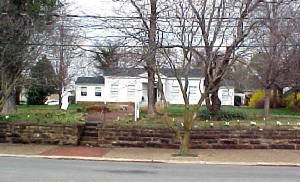
Headquarters House is located on Dickson Street in Fayetteville, Arkansas. The house dates from 1853. The name comes from
the fact that the occupying Northern army used this house for their headquarters during the Civil War in the 1860's. The
gardens are accurate reconstructions of the gardens that existed at this house during the U.S. Civil War. These gardens are
a project of the Washington County Master Gardeners, the University of Arkansas, local nurseries, and local volunteers. The
plants in the garden are based upon the records kept by the original homeowners, contemporary plant and seed catalogs of the
time, and records of plants that would have been available in the area during the Civil War. All items are grown organically
because that is the method that would have been used at the time.

What Happened...
The Battle of Fayetteville, April 18, 1863
From Rugged and Sublime: The Civil War in Arkansas;
Courtesy of the Department of Arkansas Heritage.
In April, two of the state's most aggressive cavalry commanders attempted to reverse the Southerners' sagging fortunes.
On the sixteenth, Brig. Gen. William Cabell led nine hundred Rebel cavalry north from Ozark to attack Federal forces occupying
Fayetteville. Cabell, nicknamed "Old Tige," was a thirty-six-year-old Virginian and a West Pointer whose prewar
service in the army had been primarily in the quartermaster departments On this spring morning, he would lead his troops into
a fight that was a microcosm of the whole war. The First Arkansas Cavalry (Confederate) would battle the First Arkansas Cavalry
(Union) in an area both called home.
A Federal officer described Fayetteville as "a beautiful little hamlet nestling among the foothills of the Ozark
range,… the chief educational center of the state, the home of culture, refinement, and that inborn hospitality
so characteristic of the South… The Public Square… was surrounded by stores and shops, broken only…
by an old-fashioned tavern."
The first "casualties" of the battle of Fayetteville were Lt. Gustavus F. Hottenhaur and eight of his men from
Company B of the First Arkansas Cavalry (Union), who were enjoying a dance at a private home in West Fork some eight miles
south of the town. A detachment of Cabell's cavalry under Lt. Jim Ferguson surprised the merrymakers and demanded their surrender.
The shocked Federals scattered in every direction, "into the kitchen, the cellar, and under the floor." Their commanding
officer demonstrated the greatest imagination by attempting unsuccessfully to climb up the chimney. All nine were taken prisoner.
Cabell continued his march on Fayetteville, arriving shortly after sunrise on Saturday, April 18. The Confederates approached
the city from the east with "wild and deafening shouts" and advanced on the headquarters of the Federal commander,
Col. M. LaRue Harrison, located in the Tebbetts' house just northeast of the town square." Harrison's brother, Capt.
E. B. Harrison, was asleep in the Baxter house across the street when the Rebels attacked. Awakened by the commotion, he looked
out the east door of his room and saw, to his shock and consternation, a column of Confederate cavalry moving toward him.
He escaped out the front door and ran to warn his brother.
Cabell placed his two pieces of artillery on a hillside east of town and opened fire on the Federal camp with canister
and shell. One of the first shots, an explosive shell, entered the Baxter house, where several women and children had sought
shelter in the cellar. The shell crashed through the wall and struck a heavy wooden partition. The partition deflected the
shell into a kettle of lye, which extinguished the fuse and prevented an explosion and, in all probability, saved the lives
of the civilians huddled in the cellar. For almost four hours the battle raged around the Union headquarters. The Rebels managed
to gain control of the Baxter house and a grove of trees south of the Tebbetts' house, but could go no farther.
Around 9 a.m., Col. J. C. Monroe led a desperate cavalry charge against the Union right, only to run into "a galling
crossfire ... piling rebel men and horses in heaps" in front of the Federals' ordnance office. Captain Harrison had sought
protection behind a tree and witnessed the Rebel charge. He later wrote,
I looked with wonder, as well as admiration, upon that splendid body of horsemen as they swept down Dixon Street.... [W]hen
nearing College Avenue, they were met by a fire from the Federal soldiers the most heroic could not face it.... I stood by
the tree as the cavalrymen came thundering down the road, many falling from their mounts, one horse (evidently wounded to
its death) turned and with a terrific leap cleared the high plank fence and fell dead in the Baxter lot, carrying his rider
with him, who, though evidently wounded, freed himself from the dead horse and made his way around the house.
Monroe's charge was the Confederate high water mark. Gradually, the Union forces began to drive back both flanks of the
Rebel line. The Confederates in the Baxter house at the center of the Rebels' position continued to resist for almost an hour
after both wings had begun to give way, but eventually they too were driven out. By late morning, what remained of Cabell's
command was retreating toward Ozark. Colonel Harrison had too few horses to mount a pursuit.
Federal losses were four killed, twenty-three wounded, thirty-five missing, and sixteen captured (including Hottenhaur's
ill-fated dancers at West Fork). Cabell reported his losses as approximately twenty killed, thirty wounded, and twenty missing.
The fierce resistance of the Arkansas Federals surprised him. The First Arkansas (Union) had turned and run at the battle
of Prairie Grove and ever since had been considered unreliable. But in his official report of the engagement at Fayetteville,
Cabell noted, "The enemy all (both infantry and cavalry) fought well, equally as well as any Federal troops I have ever
seen. Although it was thought by a great many that, composed as they are of disloyal citizens and deserters from our army,
they would make but a feeble stand, the reverse, however, was the case."
Cabell also reported that he could have burned a large part of the town, "but every house was filled with women and
children, a great number of whom were the families of officers and soldiers in our service." He placed part of the blame
for his setback on the superior weapons possessed by the Union troops. Many of his men were armed with "Arkadelphia rifles,"
which, he noted, were " no better than shotguns." The Federals were equipped with the longer-range Springfields
and Whitneys. Despite his failure to take the town, Cabell reported that his men were "in fine spirits, and ready to
try to take the enemy again and that he would shortly be prepared "to strike a heavier blow."
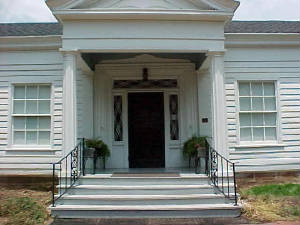

The front walk is lined on both sides with perennials.

Obedient Plant
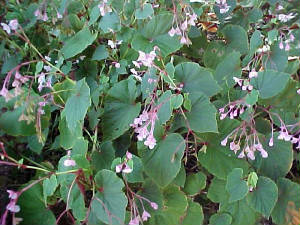
Hardy Begonia


There are various herbs such as chamomile, rue, lemon balm, and many types of mints. During the Civil War, medicines were
not available in the South, so both citizens and the military cultivated herbs for medicinal uses.
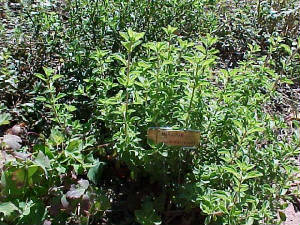
Marjoram
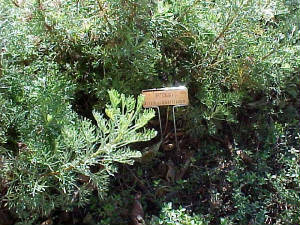
Artemisia
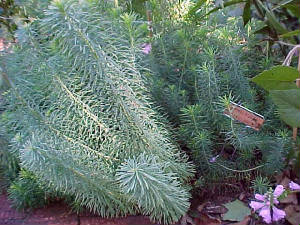

Here we have more mints and phlox.
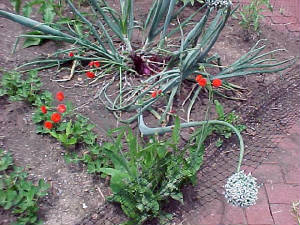
Here we have onions and tassel flowers.


Lots and lots of hollyhocks.

Tassel flowers.

Rose campion

Borage in the herb garden.
|

